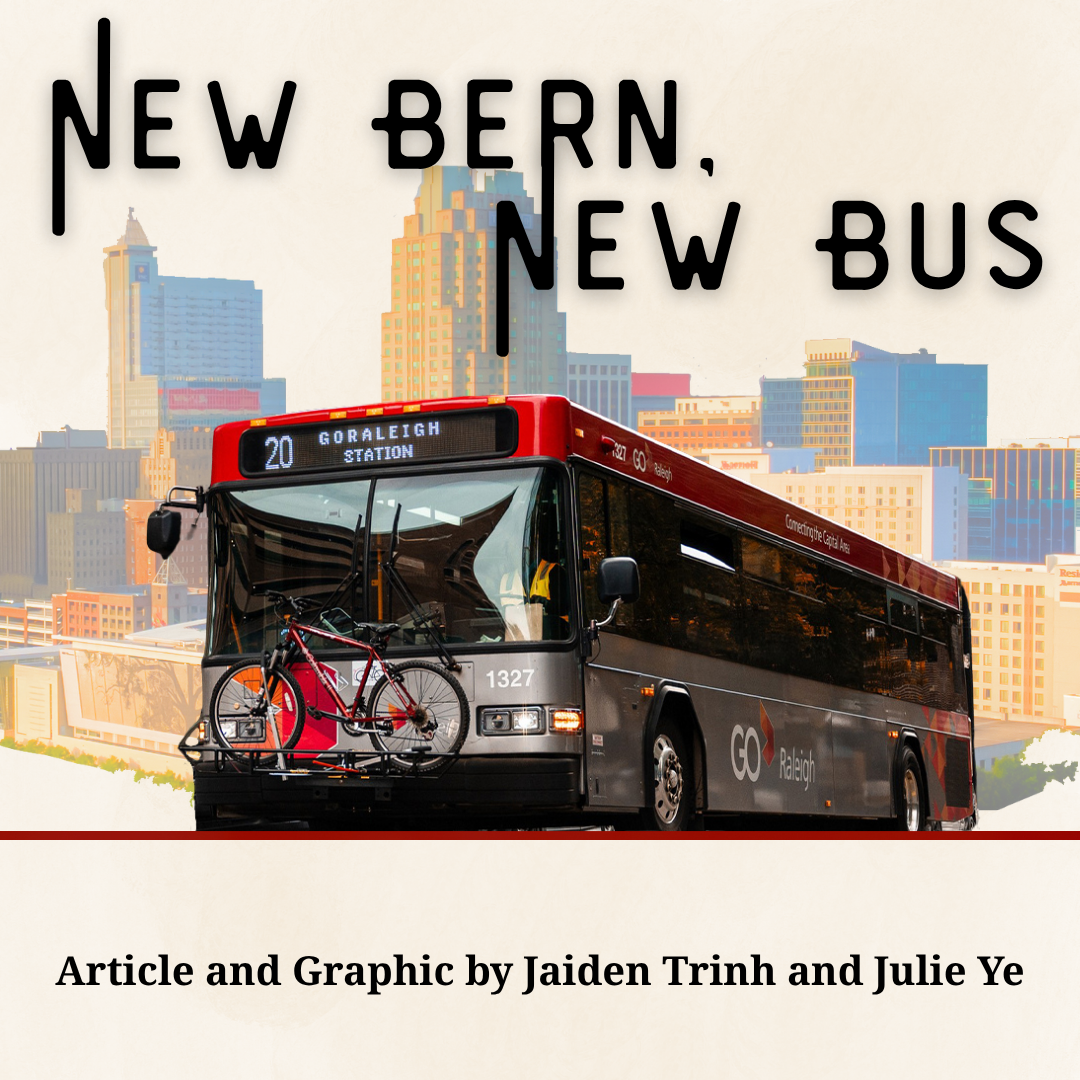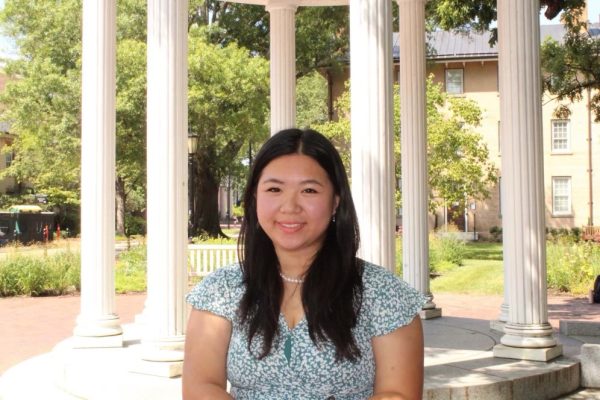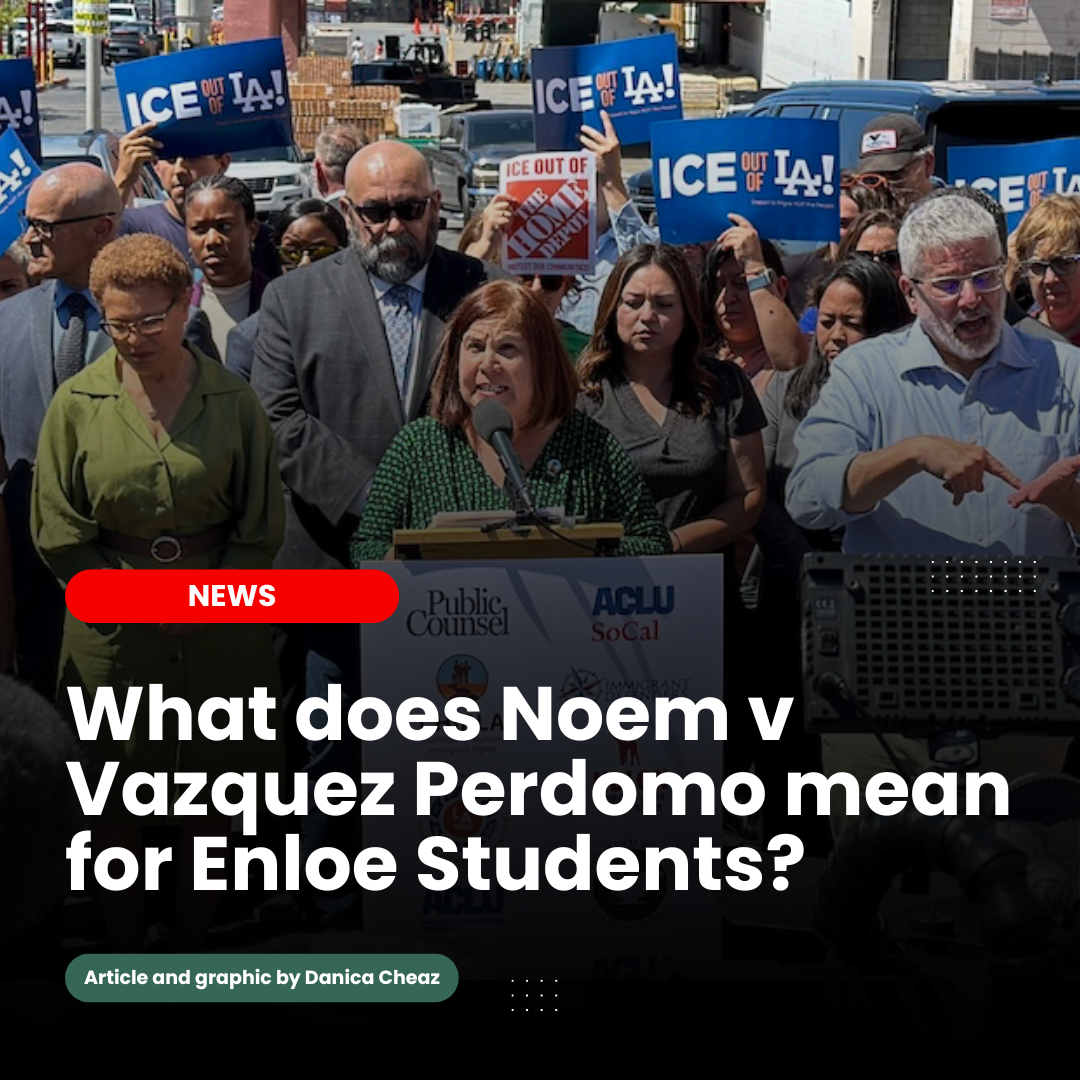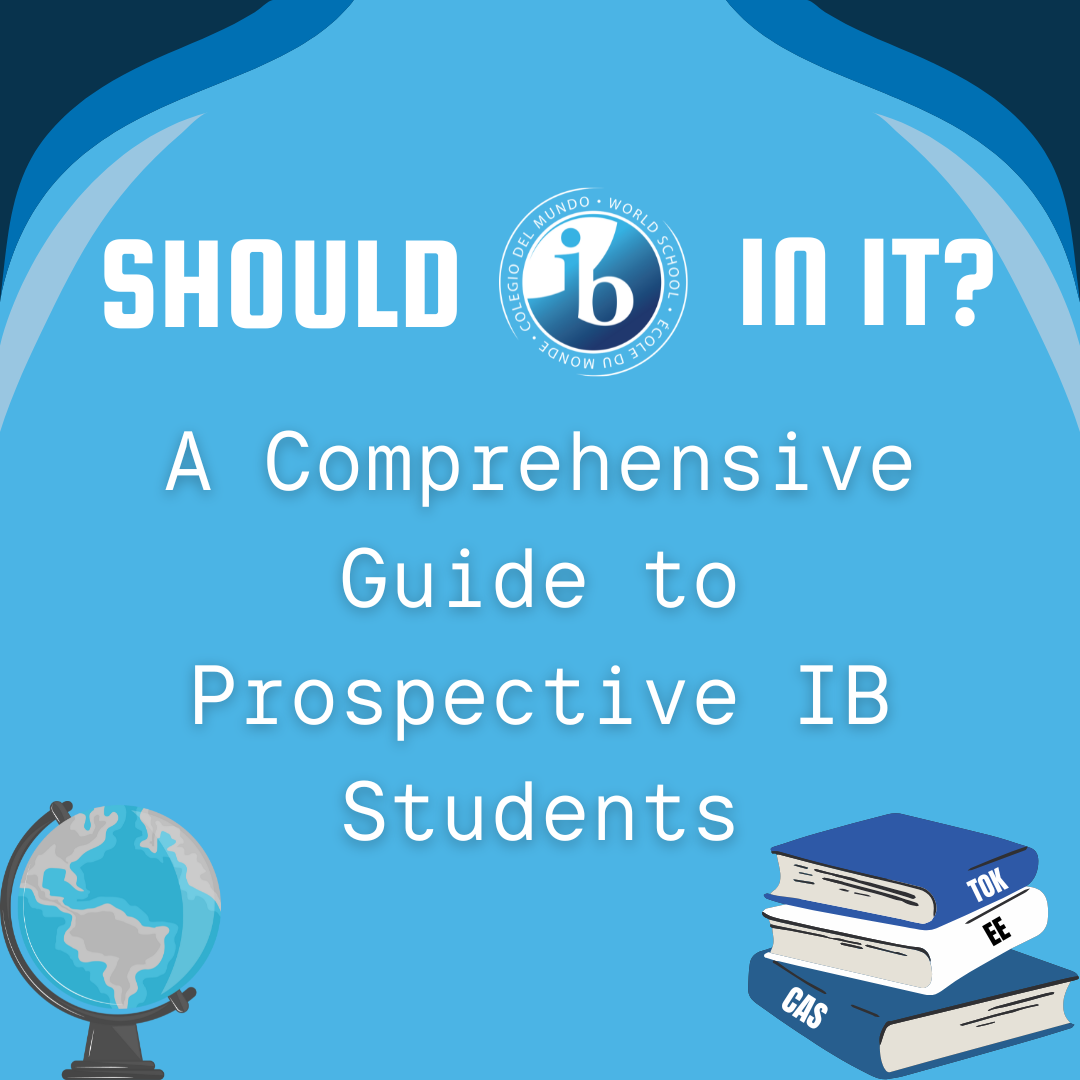This November, the city of Raleigh will break ground by constructing a new kind of bus transportation that will run through a 5.4 mile section of New Bern Avenue, the first of its kind in North Carolina.
Delayed by two years, Raleigh’s long awaited Bus Rapid Transit (BRT) system planned in 2016 is finally moving forward with construction, and is projected to begin service in 2030. But what is BRT, why was this project delayed, and how will this change the way people move around Raleigh?
BRT is all about making buses faster and more frequent, with a bus going through the route every 15 minutes or less. Using bus-only lanes running down the center of the road, off-bus fare machines and signal-priority that turns lights green for buses whenever they approach an intersection, Bus Rapid Transit systems aim to cut down on time spent in traffic or waiting at bus stops. Designed to be similar to light rail stations, platforms at every station will be exactly the same height as the bus floor, which will accommodate riders with wheelchairs, strollers, or bikes.
Another unique aspect about this project is the integration of local history, art, and culture. A total of 11 artists were selected by the city’s selection panel. These artworks will be published adjacent to the bus station on the New Bern Avenue corridor. By the end of construction, New Bern will likely look radically different.
Raleigh’s decision to build BRT is rooted in a long history of transit development. In 2016, the city passed a sales tax to fund transit before deciding to build BRT two years later. During the planning stage, city leaders considered both Bus Rapid Transit and a light rail system; the decision for choosing BRT largely accounted for growing demand for reliable transit and the city’s desire to create a project that could be built within a realistic timeline. “This selection was made back in 2018, when the Wake Transit Plan was initially figuring out which BRTs they wanted to build,” said transit planner Gabriel Wilkins. “New Bern Avenue had a lot of demand, and it’s a relatively simple corridor, so it made sense as the first line.”

New Bern Avenue was selected as the very first of the BRT corridors for a few reasons.
According to Wilkins, “The current GoRaleigh Route 15 (which runs through New Bern), is the most productive route for how many people we move per mile.”
Wilkins explains that because of New Bern’s straight road, heavy daily traffic, and connections to major destinations, city planners think it’s the ideal pilot for the project. It links downtown Raleigh to WakeMed’s Main Campus, Enloe High School, as well as several residential neighborhoods in the adjacent area. One of BRT’s main objectives is to improve travel time along this route; the project aims to make buses a more appealing transportation option for both adult and student commuters.
Thousands of cars travel up and down New Bern Avenue everyday. Congestion around the Enloe area can be intense, especially during arrival and dismissal times. However, a dedicated bus lane could reduce delays for both public transit riders and everyone else on the road.
BRT is projected to finish construction by 2030, although several factors could affect the timeline.
“A lot of the first phase of the project is actually replacing water and sewer pipes, which [are] about 100 or so years old,” says Wilkins.
Other challenges that are being anticipated include the potential to run into buried streetcar tracks through downtown Raleigh, as well as granite rocks which can only be removed through jackhammering.
However, planners have carefully considered the disruptions and are planning to divert traffic to minimize them as much as possible. Rather than closing down the entire street, the city will build temporary lanes and shift traffic. Full street closures are currently not expected, and commuters will still be able to have access to New Bern Avenue.
The New Bern project is only the first of four projects, being used as a pilot for other corridor projects which will happen in Cary, Durham, Chapel Hill, and Charlotte. As Raleigh continues to grow, city planners are expecting that BRT will be the centerpiece of a sustainable transportation network across the entire Triangle Region.
Wilkins sees this project as a big opportunity: “[Bus Rapid Transit] enables you to build denser around it and still move people around pretty well.”
Works Cited
“Bus Rapid Transit (BRT) Projects.” Raleighnc.gov, raleighnc.gov/bus-rapid-transit.
Eanes, Zachery. “Feds Don’t Want to Help Fund the Triangle’s Long-Planned Commuter Rail Plan.” Axios, Axios Raleigh, 26 July 2023, www.axios.com/local/raleigh/2023/07/26/raleigh-durham-commuter-rail-faces-bleak-funding-outlook.
Stradling, Richard. “Work on Raleigh’s Long-Delayed Bus Rapid Transit Line to Begin This Fall.” Raleigh News & Observer, Raleigh News & Observer, 15 July 2025, www.newsobserver.com/news/politics-government/article310639845.html. Accessed 29 Oct. 2025.














